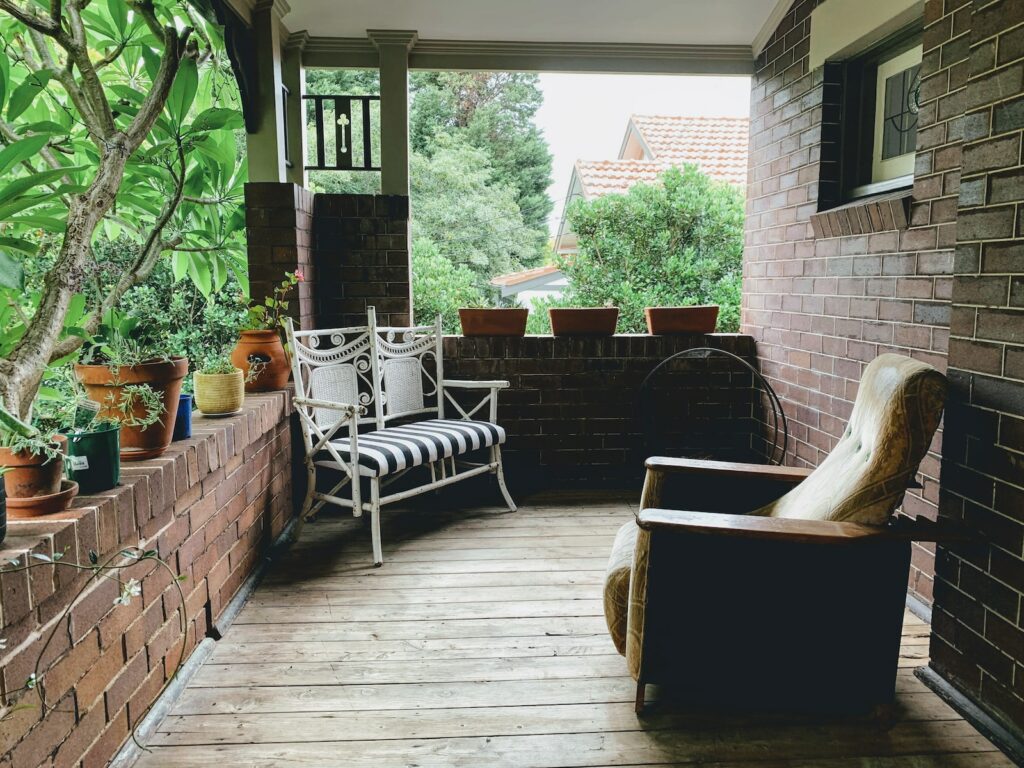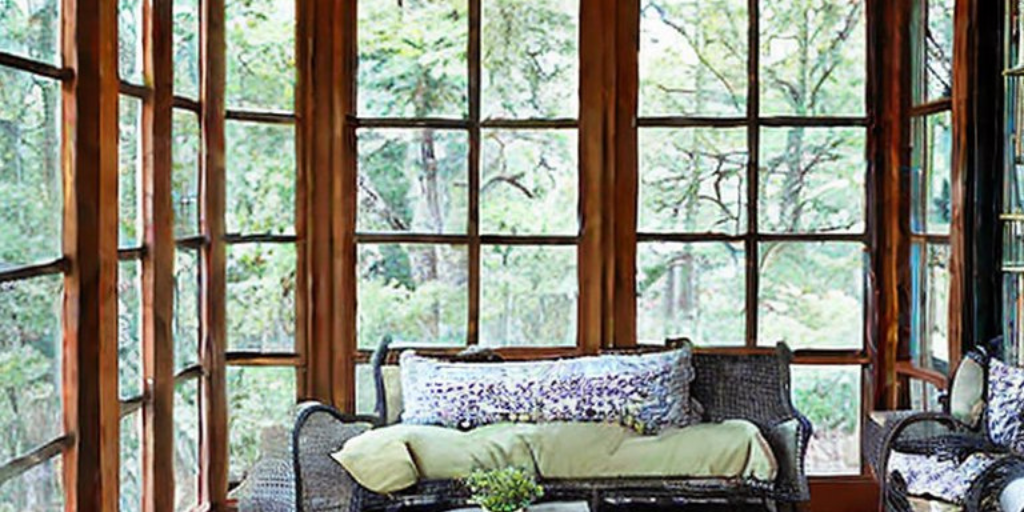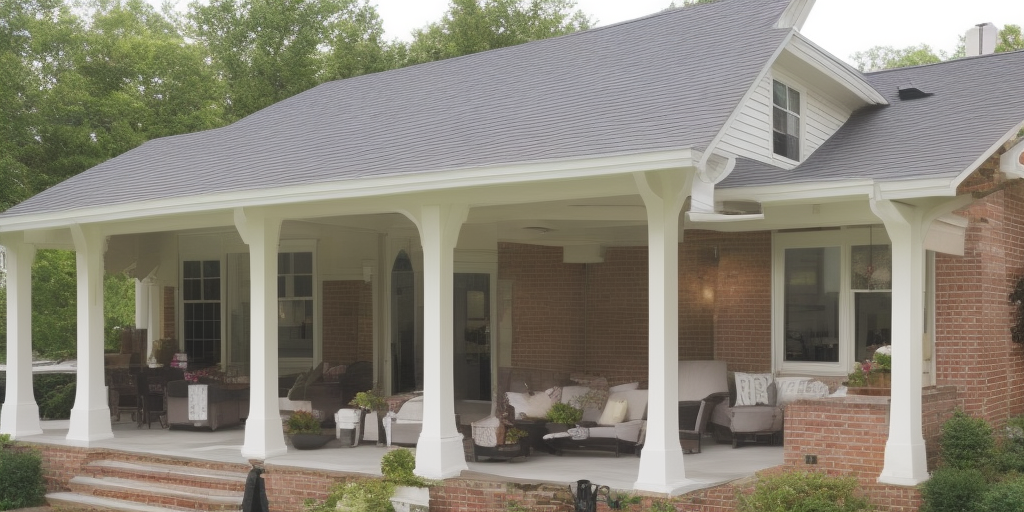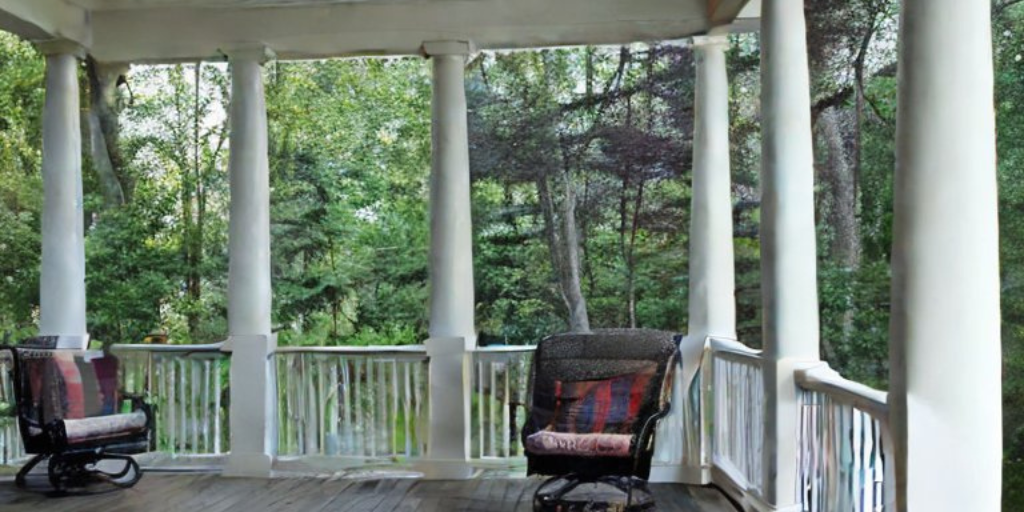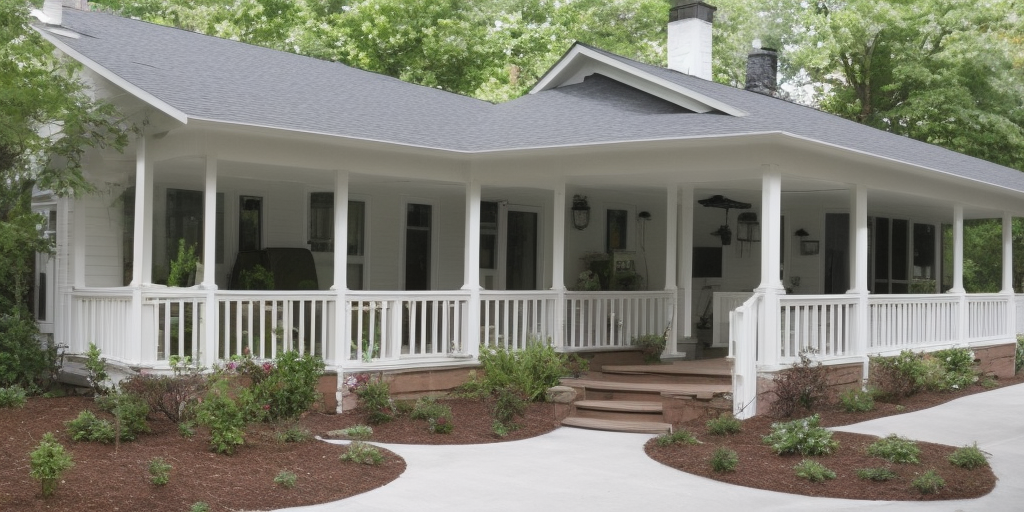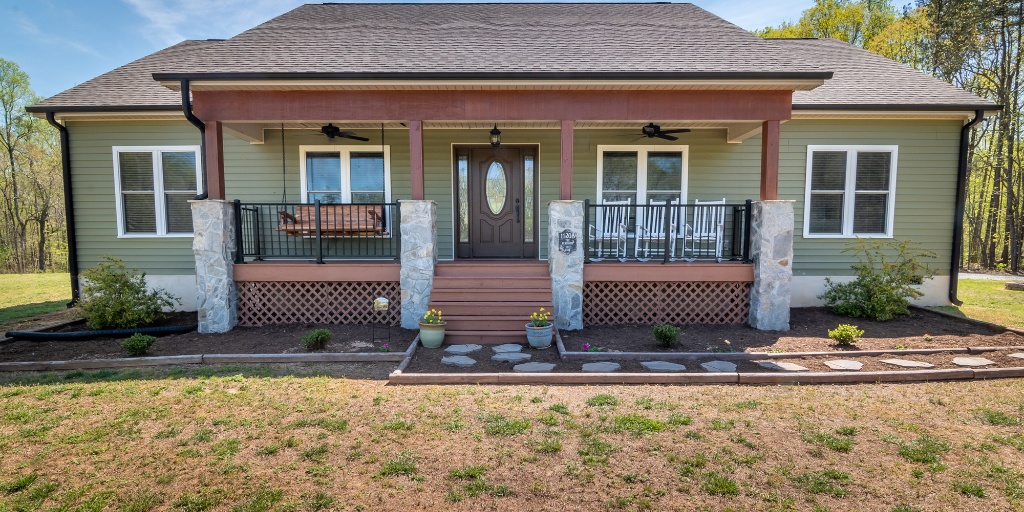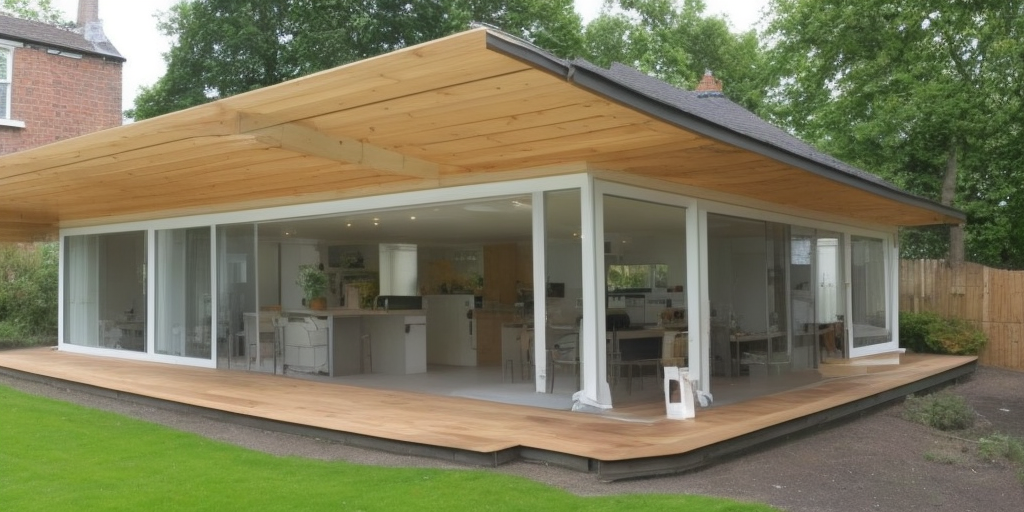Do you want to know what is a good size for a covered porch? A covered porch is an extension of your home that provides a perfect outdoor space for relaxing, entertaining, and enjoying the natural surroundings. However, determining the appropriate size for your covered porch can be challenging, as it depends on various factors which we will look at today.
What is a good size for a covered porch?
Contents
- 1 What is a good size for a covered porch?
- 2 What are the dimensions of a good covered porch?
- 3 What is the standard size of a covered porch?
- 4 How much square footage is needed for a covered porch?
- 5 What are the factors to consider when sizing a covered porch?
- 6 Is a 12×16 covered porch a good size?
- 7 Can a covered porch be too big or too small?
- 8 What are the advantages of a larger covered porch?
- 9 What size porch works best for different architectural styles?
- 10 How does climate affect the size of a covered porch?
- 11 Is it better to have a larger or smaller covered porch for privacy?
- 12 Can the size of a covered porch affect its cost?
- 13 Can the size of a covered porch impact home insurance rates?
- 14 How does the size of a covered porch affect its overall aesthetic appeal?
- 15 Is there a recommended size for a covered porch in different regions of the world?
- 16 Final thoughts on what is a good size for a covered porch
The size of a covered porch depends on various factors, including the available space, intended use, and personal preferences. However, a good size for a covered porch is typically around 12 feet by 16 feet or larger, as it provides ample space for furniture, outdoor activities, and entertainment.
This size also allows for the inclusion of additional features, such as ceiling fans, lighting, and outdoor heating, which enhance the functionality and comfort of the porch. Ultimately, the size of your covered porch should be proportionate to the size of your home and fit seamlessly into your overall outdoor living space.
What are the dimensions of a good covered porch?
The dimensions of a good covered porch depend on various factors, such as the available space, intended use, and personal preferences. However, a good covered porch should have a minimum dimension of 8 feet by 10 feet, which is enough space to accommodate a small table and chairs for outdoor dining or relaxation.
If you plan to use your porch for entertaining, then a larger size would be appropriate. A porch that measures around 12 feet by 16 feet or more is an ideal size for outdoor activities and entertainment, as it provides enough space to include seating areas, a grill, and even a fireplace.
In addition to the size, you should also consider the height of your covered porch. The height should be at least 7 feet to allow for comfortable movement and ensure adequate headroom. The overall design and style of the porch should also be considered to ensure that it complements the architectural style of your home and enhances its curb appeal.
Ultimately, the dimensions of a good covered porch will vary depending on your needs and preferences. You should consider the available space, intended use, and budget to determine the appropriate size for your covered porch.
What is the standard size of a covered porch?
There is no standard size for a covered porch as it can vary depending on several factors, including the available space, intended use, and personal preferences. However, a typical covered porch is usually between 80 and 200 square feet in size.
If you have a smaller outdoor space, a covered porch that measures 8 feet by 10 feet or 10 feet by 10 feet would be appropriate. This size provides enough room for a small seating area and a table for outdoor dining.
For those with larger outdoor spaces, a covered porch that measures 12 feet by 16 feet or more would be ideal. This size allows for more extensive seating arrangements, outdoor cooking areas, and other amenities such as outdoor heating and lighting.
It’s essential to remember that the size of your covered porch should be proportionate to the size of your home and the overall outdoor living space. Therefore, it’s always best to consider your unique needs and budget when determining the size of your covered porch.
How much square footage is needed for a covered porch?
The amount of square footage needed for a covered porch varies depending on several factors, including the available space, intended use, and personal preferences. However, a covered porch typically requires a minimum of 80 square feet of space.
If you plan to use your porch for outdoor dining or relaxation, a covered porch that measures 8 feet by 10 feet would be appropriate, providing 80 square feet of space. This size is suitable for a small table and chairs, a rocking chair or a porch swing, and other small seating arrangements.
If you intend to use your porch for entertaining or hosting guests, a larger covered porch would be more appropriate. A porch that measures 12 feet by 16 feet or more provides ample space for outdoor seating arrangements, cooking areas, and even a fireplace or a television.
It’s crucial to keep in mind that the amount of square footage needed for a covered porch will depend on the intended use and personal preferences. Therefore, it’s always best to consult with a professional builder or contractor to determine the appropriate amount of square footage for your covered porch based on your unique needs and budget.
What are the factors to consider when sizing a covered porch?
Several factors need to be considered when sizing a covered porch, including:
Available space: The size of the covered porch will depend on the available space in your outdoor living area. You need to measure the area where you plan to build your porch and determine the maximum size that you can fit.
Intended use: The intended use of the covered porch will also play a significant role in determining the appropriate size. For instance, if you plan to use your porch for outdoor dining or relaxation, you will need enough space to accommodate a table, chairs, and other seating arrangements.
Budget: The cost of building a covered porch will increase as the size of the porch increases. Therefore, you need to consider your budget when determining the appropriate size.
Architectural style: The architectural style of your home will also play a role in determining the appropriate size of your covered porch. The size and design of the porch should be proportional to the size and style of your home to ensure that it enhances the overall curb appeal.
Climate: The climate in your area will also affect the size of your covered porch. For instance, if you live in an area with extreme weather conditions, you may need to build a larger porch to provide more shelter from the elements.
Building codes: Local building codes may dictate the minimum and maximum size of a covered porch in your area. Therefore, you need to consult with your local authorities to ensure that you comply with all regulations.
By considering these factors, you can determine the appropriate size of your covered porch that meets your needs, budget, and local regulations.
Is a 12×16 covered porch a good size?
Yes, a 12×16 covered porch is a good size for most outdoor living spaces. It provides ample room for outdoor seating arrangements, cooking areas, and other amenities, while still remaining proportional to the size of most homes.
A porch that measures 12 feet by 16 feet provides 192 square feet of space, which is large enough to accommodate a dining table, chairs, and a seating area. This size is suitable for entertaining guests or simply relaxing outdoors with family and friends.
However, it’s important to note that the appropriate size of a covered porch depends on several factors, such as available space, intended use, architectural style, and budget. So, before building a covered porch, it’s best to consult with a professional builder or contractor to ensure that the size and design of your porch meet your specific needs and preferences.
Can a covered porch be too big or too small?
Yes, a covered porch can be too big or too small, depending on several factors, including available space, intended use, and personal preferences.
If a covered porch is too small, it may not meet your intended use or accommodate your outdoor furniture and amenities. For instance, if you plan to use your porch for outdoor dining or entertaining, a small porch may not provide enough space for a dining table and chairs or comfortable seating arrangements.
On the other hand, if a covered porch is too big, it may overpower the surrounding outdoor living space and the architectural style of your home. It can also increase the cost of building and maintaining the porch.
Therefore, it’s important to carefully consider the available space, intended use, and personal preferences when sizing a covered porch. Working with a professional builder or contractor can also help you determine the appropriate size of your porch based on your unique needs and budget.
What are the advantages of a larger covered porch?
A larger covered porch has several advantages, including:
More space for outdoor activities: A larger covered porch provides more space for outdoor activities such as dining, entertaining, relaxing, and playing games. This allows you to host larger gatherings and create more comfortable and functional outdoor living spaces.
Increased home value: A larger covered porch can increase the value of your home by providing additional outdoor living space that can be enjoyed by you and future homeowners. This can make your home more attractive to potential buyers and increase its resale value.
Enhanced curb appeal: A larger covered porch can enhance the curb appeal of your home by adding an attractive outdoor living space that complements the architectural style of your home.
Protection from the elements: A larger covered porch provides greater protection from the elements such as rain, snow, and strong winds. This allows you to use your porch more often and for longer periods throughout the year.
More design options: A larger covered porch provides more design options such as adding outdoor kitchens, fireplaces, or televisions. This allows you to create a custom outdoor living space that meets your specific needs and preferences.
Overall, a larger covered porch can provide many benefits, including more outdoor living space, increased home value, enhanced curb appeal, greater protection from the elements, and more design options.
What size porch works best for different architectural styles?
The size of a porch that works best for different architectural styles can vary depending on the specific style and other factors. However, here are some general guidelines to consider:
Colonial style: A colonial-style home typically features a symmetrical façade and a centered entryway. A covered porch that spans the width of the home, with a width of 6 to 8 feet, can complement the symmetry of the home’s design.
Craftsman style: A craftsman-style home often features a low-pitched roof and wide front porch with tapered columns or pillars. A porch with a width of 8 to 12 feet can work well with this style of home.
Ranch style: A ranch-style home typically has a simple, low-pitched roofline and an attached garage. A covered porch with a width of 6 to 8 feet can complement the horizontal design of the home and provide a welcoming entryway.
Victorian style: A Victorian-style home often features intricate details such as ornate trim and multiple gables. A covered porch that wraps around the front and sides of the home, with a width of 8 to 12 feet, can accentuate the home’s elaborate design.
Contemporary style: A contemporary-style home typically has clean lines and a minimalist design. A covered porch with a width of 6 to 8 feet can complement the simplicity of the home’s design and provide a functional outdoor living space.
It’s important to note that the appropriate size of a porch for a specific architectural style can also depend on the available space, intended use, and personal preferences.
Working with a professional builder or architect can help you determine the appropriate size and design of your porch based on your unique needs and the architectural style of your home.
How does climate affect the size of a covered porch?
Climate can have a significant impact on the size of a covered porch. Here are some ways in which climate can affect porch size:
Protection from the elements: In regions with extreme weather conditions such as heavy rainfall, snow, or strong winds, a larger covered porch can provide better protection for you and your outdoor furniture. A covered porch can also help to shield your home’s interior from the elements and reduce maintenance and repair costs.
Available outdoor living season: In regions with longer outdoor living seasons, such as warmer climates, a larger covered porch can provide additional space for outdoor activities such as dining, relaxing, or entertaining. In contrast, regions with shorter outdoor living seasons may not require as much porch space.
Outdoor temperature: In regions with extreme temperatures, such as very hot or cold climates, a larger covered porch can provide a comfortable outdoor living space. A porch that’s big enough to accommodate outdoor heaters, fans, or air conditioning units can extend the usable outdoor living season.
Wind patterns: In regions with high winds or frequent storms, a larger covered porch can provide a more stable and secure outdoor living space. A porch that’s designed to withstand strong winds can provide better protection for you and your outdoor furniture.
Sun exposure: In regions with strong sun exposure, a larger covered porch can provide shade and protect you from the harmful effects of UV radiation. A porch that’s designed to provide shade at different times of the day can make the porch more comfortable and functional.
Overall, the appropriate size of a covered porch can depend on several factors, including the climate of the region. Working with a professional builder or contractor can help you determine the appropriate size and design of your porch based on your unique needs and the climate of your region.
Is it better to have a larger or smaller covered porch for privacy?
The size of a covered porch may not necessarily affect privacy directly. However, there are a few ways in which the size of a covered porch can impact privacy:
Distance from neighbors: If you’re concerned about privacy, having a larger covered porch can allow you to place your outdoor furniture and accessories farther away from your neighbors. This can create more of a buffer between your home and neighboring properties and make your outdoor living space feel more secluded.
Height of the porch: A taller porch may provide more privacy than a shorter one, as it can be more difficult for passersby to see inside. However, it’s important to check local zoning regulations and obtain any necessary permits before building a porch that exceeds the maximum height limit.
Orientation of the porch: The orientation of the porch relative to your neighbors’ properties can also affect privacy. A porch that’s angled away from neighboring properties or situated in a more secluded area of your yard may offer greater privacy.
Design features: The design features of your porch can also impact privacy. For example, adding lattice or privacy screens to the sides of the porch can create a more secluded outdoor living space. Incorporating landscaping or other elements that block the view from neighboring properties can also enhance privacy.
Ultimately, the size of a covered porch may not be the most critical factor in achieving privacy. Other design elements and features can have a greater impact on creating a private and secluded outdoor living space.
Can the size of a covered porch affect its cost?
Yes, the size of a covered porch can affect its cost. Generally, the larger the porch, the higher the cost will be. Here are some ways in which the size of a covered porch can impact its cost:
Materials: The larger the porch, the more materials will be required to build it. This includes the lumber, roofing materials, and hardware needed to construct the porch. The cost of materials can increase substantially as the size of the porch grows.
Labor: A larger porch will require more labor to build, which can increase the overall cost. This includes the cost of hiring skilled tradespeople such as carpenters, roofers, and electricians, who will work on the project.
Permits: In some areas, the cost of permits is based on the size of the porch. Larger porches may require more permits and inspections, which can increase the overall cost of the project.
Design complexity: A larger porch may require more complex designs, such as multiple rooflines, which can increase the overall cost of the project. More complex designs also require more time and skill to execute, which can drive up labor costs.
Accessories and features: A larger porch may be able to accommodate more accessories and features, such as ceiling fans, lighting, or outdoor kitchens, which can also add to the overall cost of the project.
Overall, the size of a covered porch can have a significant impact on its cost. It’s important to work with a professional builder or contractor to determine the appropriate size and design of your porch based on your budget and other factors. This can help you create a porch that fits your needs and is also cost-effective.
Can the size of a covered porch impact home insurance rates?
The size of a covered porch may impact home insurance rates, but it is not typically a major factor. Insurance rates are primarily based on the value of the home, the risk of damage or loss, and the level of coverage selected by the homeowner.
While a larger porch may increase the value of the home and potentially increase the cost of repairs in the event of damage, the impact on insurance rates is generally minimal.
However, there are a few situations in which the size of a covered porch could affect home insurance rates:
Liability risks: If your covered porch is large enough to accommodate outdoor gatherings or events, this may increase your liability risk if someone is injured while on your property. In this case, your insurance company may require additional liability coverage or charge higher rates to compensate for the increased risk.
Zoning regulations: In some areas, there may be zoning regulations that limit the size or height of covered porches. If you build a porch that exceeds these limits, your insurance company may require additional coverage or charge higher rates to account for the increased risk of damage or loss.
Building codes: Building codes may also impact the size of a covered porch and the level of insurance coverage required. If your porch does not meet local building codes or safety requirements, your insurance company may require additional coverage or charge higher rates to compensate for the increased risk of damage or loss.
Overall, while the size of a covered porch may impact home insurance rates in some situations, it is not typically a major factor. Other factors, such as the value of the home, the risk of damage or loss, and the level of coverage selected, are typically more significant in determining insurance rates.
How does the size of a covered porch affect its overall aesthetic appeal?
The size of a covered porch can have a significant impact on its overall aesthetic appeal. A porch that is too small may look cramped or out of proportion with the rest of the house, while a porch that is too large may look overwhelming or out of place. Here are a few ways in which the size of a covered porch can impact its aesthetic appeal:
Proportion: A well-designed porch should be in proportion to the size and style of the house. This means that the size of the porch should be balanced with the overall size of the house, as well as the size of the surrounding landscape. A porch that is too small or too large can create an unbalanced look that detracts from the overall aesthetic appeal of the house.
Style: The size of the porch should also be in keeping with the style of the house. For example, a small, cozy porch may be appropriate for a cottage-style house, while a larger, more formal porch may be better suited to a Victorian-style home. The size of the porch can help to reinforce the architectural style of the house, enhancing its overall aesthetic appeal.
Function: The size of the porch should also be determined by its intended function. If the porch is primarily a decorative feature, a smaller porch may be more appropriate. However, if the porch is intended for outdoor living and entertaining, a larger porch may be necessary to accommodate seating, dining, and other activities.
Details: Finally, the size of the porch can impact the overall aesthetic appeal of the house through the use of details and finishes. A larger porch may allow for more intricate details and finishes, such as decorative columns, balustrades, or lighting fixtures. These details can add to the overall charm and character of the porch, enhancing its aesthetic appeal.
Overall, the size of a covered porch is an important factor in its overall aesthetic appeal. When designing a porch, it’s important to consider its proportion, style, function, and details to ensure that it enhances the overall beauty of the house.
Is there a recommended size for a covered porch in different regions of the world?
There is no single recommended size for a covered porch that is appropriate for all regions of the world. The ideal size of a covered porch can vary depending on several factors, including the climate, the local building codes, the size and style of the house, and the intended use of the porch.
For example, in areas with hot and humid climates, a larger porch with ample shade may be more desirable to provide relief from the heat. In areas with heavy snowfall, a smaller porch may be easier to maintain and clear of snow during the winter months. Building codes and zoning regulations in different regions may also dictate specific size requirements for covered porches.
Additionally, the size and style of the house can also impact the size of the porch. A larger house may require a larger porch to maintain proper proportion and balance, while a smaller house may look better with a smaller porch.
Ultimately, the ideal size of a covered porch is subjective and can depend on a variety of factors. Homeowners should consider their specific needs and preferences, as well as local building codes and regulations, when determining the size of their covered porch.
Final thoughts on what is a good size for a covered porch
In conclusion, what is a good size for a covered porch will depend on many factors. The size of your covered porch is a crucial factor that determines its functionality, comfort, and overall aesthetic appeal.
Consider the available space, intended use, and personal preferences when determining the appropriate size for your covered porch. With proper planning and design, you can create a perfect covered porch that adds value to your home and enhances your outdoor living experience.
